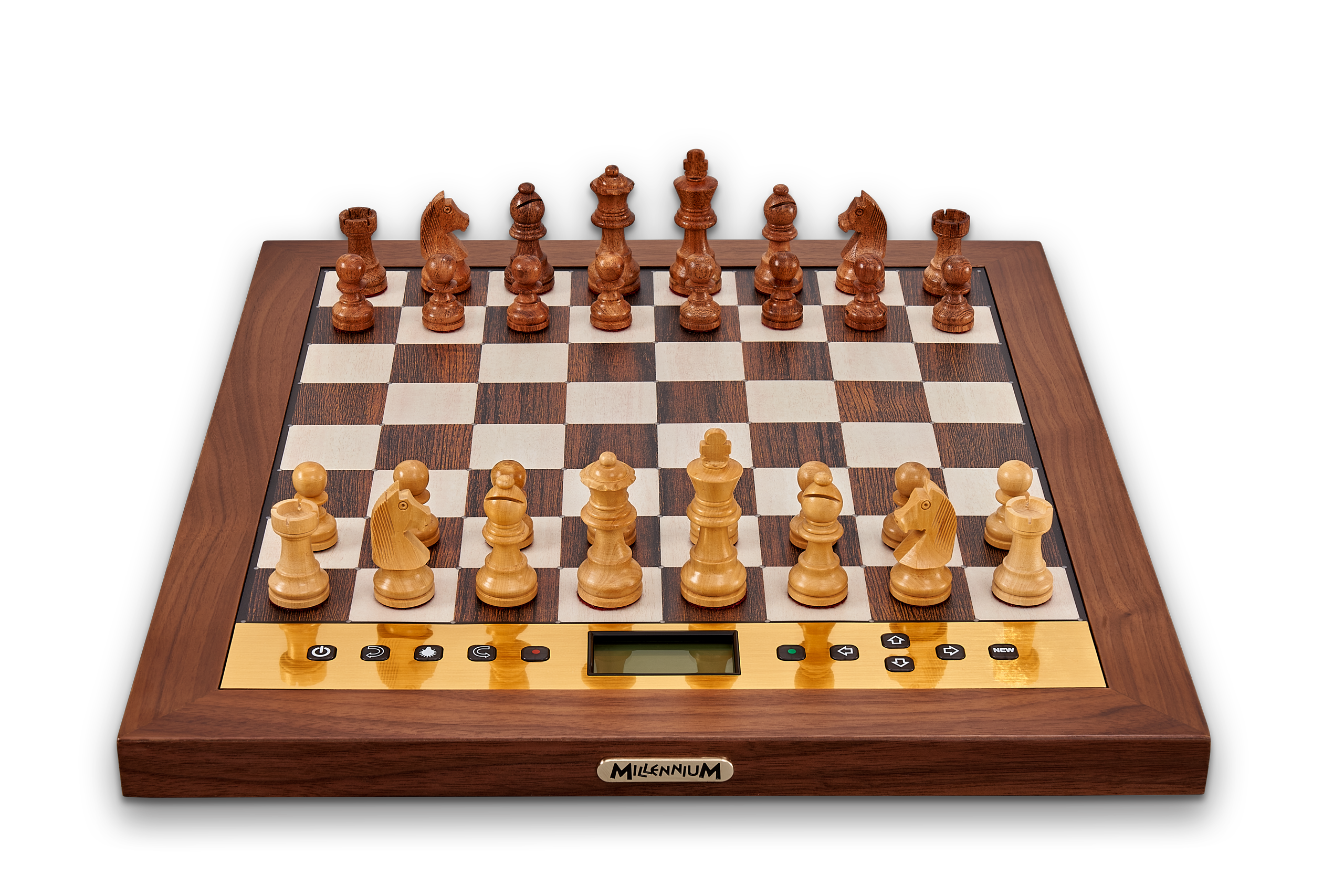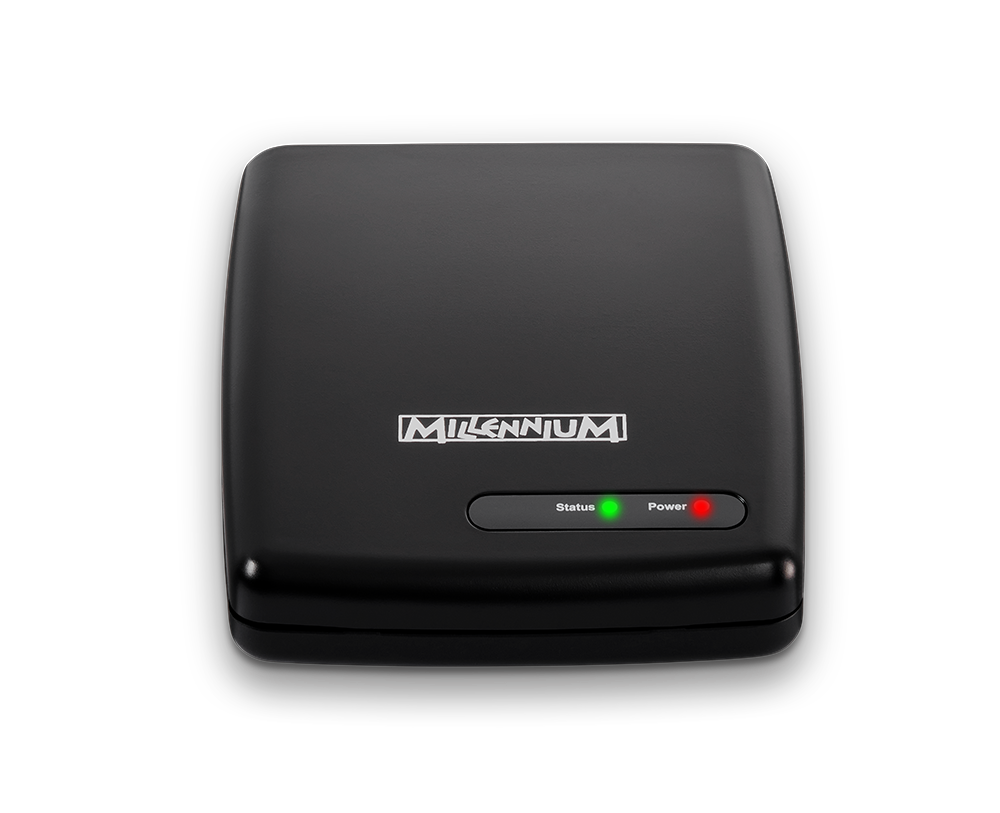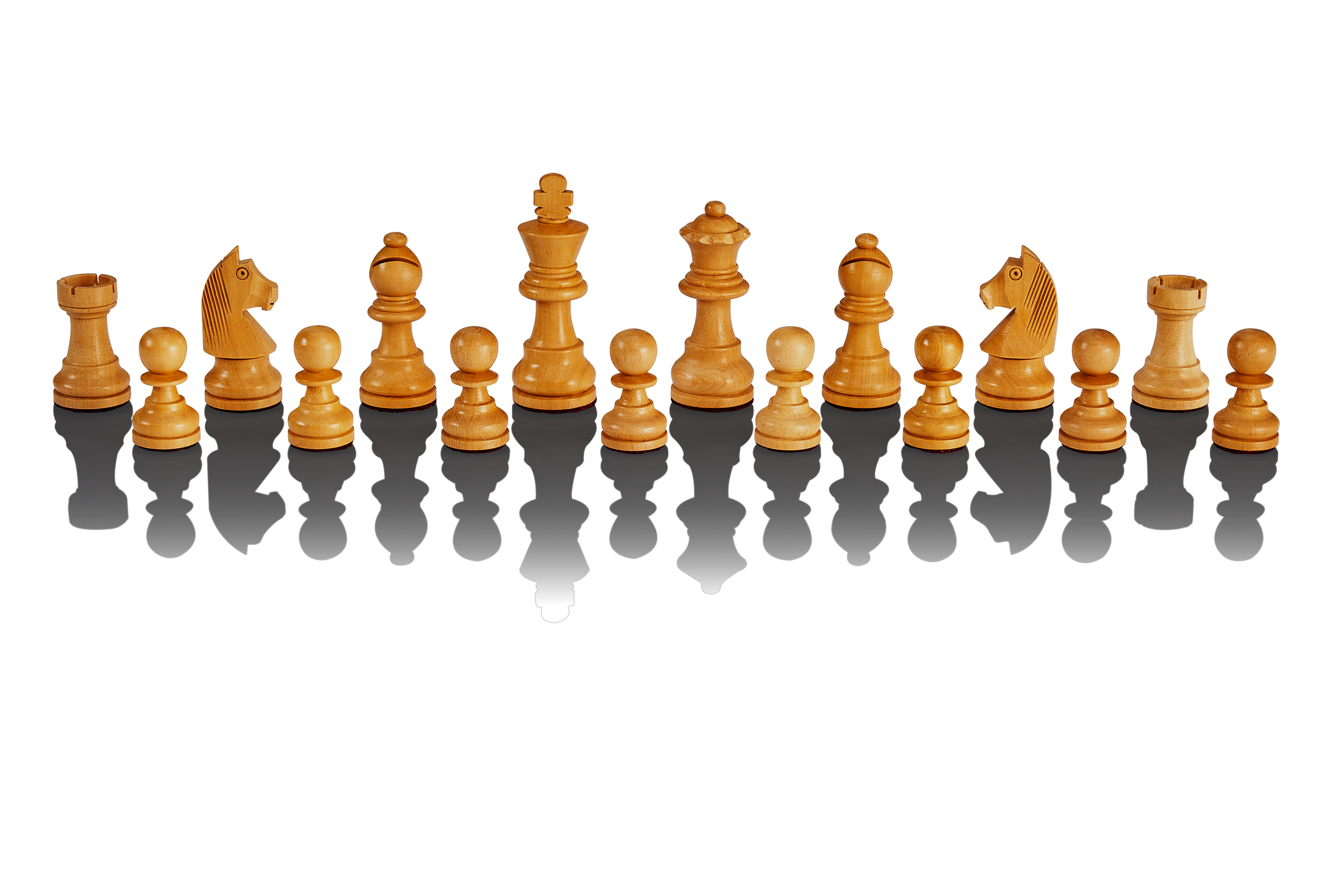Wie spielt man Schach960?
Schach960 ist auch als Chess960, Fischer-Random-Chess oder Fischerschach bekannt. Schachweltmeister (1972-75) Bobby Fischer entwickelte diese kreative Variante mit 960 verschiedenen Startstellungen. 2009 wurden die Regeln des Schach960 vom Weltschachverband FIDE aufgenommen.
Startpositionen – Die Königstabelle
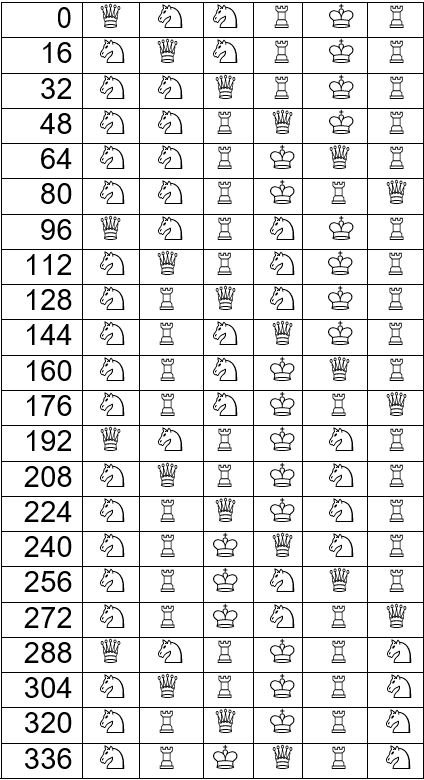
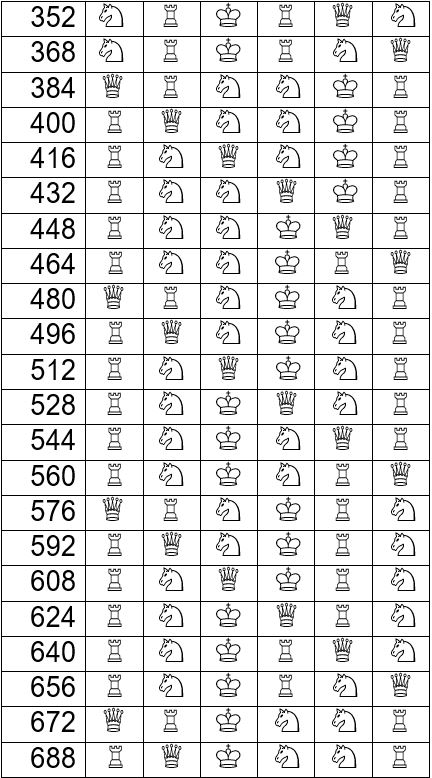
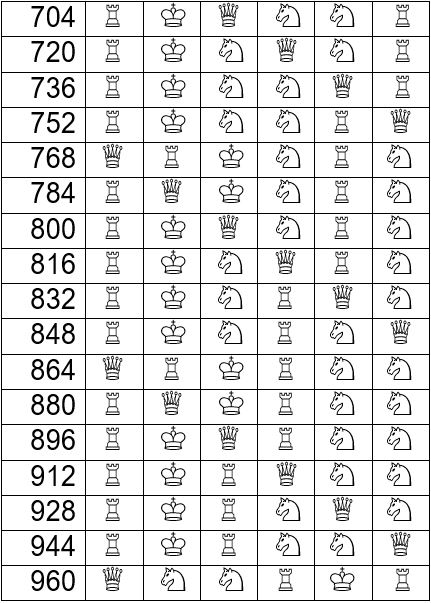
Startpositionen – Die Läufertabelle
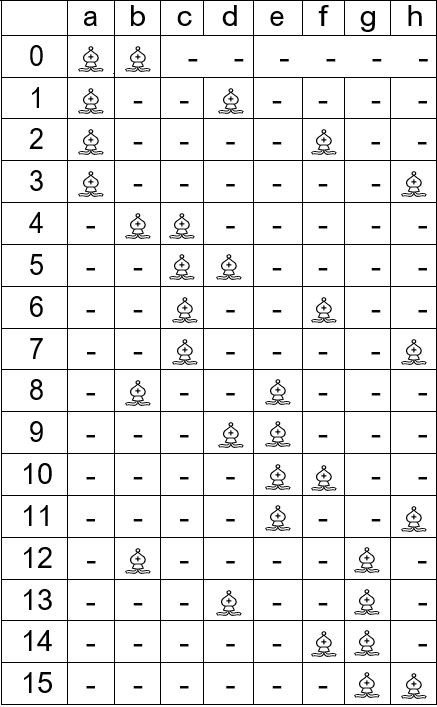
Die beiden Tabellen dienen der raschen Zuordnung einer beliebigen Schach960-Startposition (kurz: SP) auf der weißen Grundreihe zu einer ausgelosten Zahl zwischen 1 und 960 (bzw. 0 und 959).
Suchen Sie in der Königstabelle dieselbe oder nächst kleinere Nummer heraus. Bestimmen Sie nun die Differenz (0 … 15) zur gelosten Zahl und suchen Sie in der Läufertabelle die dazu passende Läuferaufstellung. Stellen Sie nun zuerst die beiden Läufer entsprechend auf die Grundreihe, sodann die sechs Figuren in der Reihenfolge aus der gefundenen Zeile der Königstabelle auf die verbliebenen sechs freien Plätze.
Beispiel:
Wir betrachten die SP 518. In der Königstabelle finden wir die Nr. 512:

Für den Restwert finden wir in der Läufertabelle an Nr.6

Insgesamt ergibt sich also hierdurch für die SP 518 = 512+6 die bekannte Aufstellung für Weiß aus dem traditionellen Schach:

Regeln des Schach960
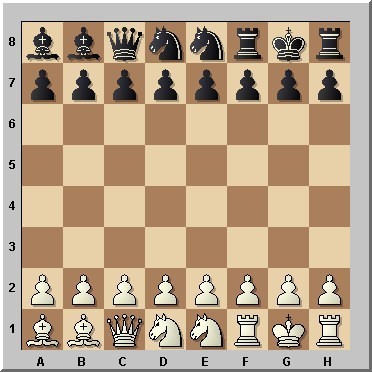
Beispiel: SP 960
Bei der Auslosung der Startpositionen gibt es 960 verschiedene mögliche Anordnungen.
Alle Spielregeln bis auf die speziellen Rochade-Regeln, die im folgenden erklärt werden, sind wie beim herkömmlichen Schach.
Spezielle Rochade-Regeln
Eine wichtige Nuance, die Schach960 vom Shuffle Chess unterscheidet, ist das Rochaderecht. Da nicht weniger als 960 Startpositionen möglich sind, wurde das Rochaderecht angepasst und erweitert.
Bitte beachten: Im Schach960 gibt es vier verschiedene Rochade-Möglichkeiten, je nachdem wo der König und die Türme in der SP stehen:
- „Zweizügige Rochade“: Einen Zug mit dem König, einen Zug mit dem Turm.
- „Platzwechsel-Rochade“: König und Turm wechseln die Plätze.
- „König-Rochade“: nur der König zieht.
- „Turm-Rochade“: nur der Turm zieht.
Wichtig: Beim Schach960 rochieren König und Turm gemeinsam, egal welche der oben genannten Rochade- Regeln angewandt wird.
Tipp: Bevor eine der oben genannten Rochade-Möglichkeiten gezogen wird, empfiehlt es sich, die Rochade anzusagen, um Missverständnisse zu vermeiden. Beim Schach960 spricht man nicht von langer und kurzer Rochade, sondern von „c“- Rochade (entspricht 0-0-0 ) und „g“-Rochade (entspricht 0-0). Egal, wo König und Türme zu Beginn stehen, wenn sich eine Partei zur Rochade entschließt, finden die beiden Figuren ihr vertrautes Plätzchen: Bei der so genannten c-Rochade steht der König auf c1 (c8) und der Turm auf d1 (d8), bei der g- Rochade steht der König auf g1 (g8) und der Turm auf f1 (f8). Ansonsten sind aber die üblichen Rochaderegeln zu beachten.
Wichtig: Eine Rochade ist nur statthaft, falls vom König bis zu seinem Zielfeld (inkl.) höchstens der beteiligte Turm steht, und wenn vom Turm bis zu dessen Zielfeld (inkl.) höchstens der beteiligte König steht (daraus folgt insbesondere, dass die Felder zwischen beiden Figuren frei sein müssen).
Bemerkung: Beim Schach960 kann es vorkommen, dass nach der c- Rochade (0-0-0) auf den Feldern a1, b1 und e1 eine Figur steht, oder nach der g- Rochade Figuren auf e1 und h1 zu finden sind. Dies ist im traditionellen Schach nicht möglich.
Quelle: Chess Tigers Training Center GmbH / Scharnagl, Eric van Reem

